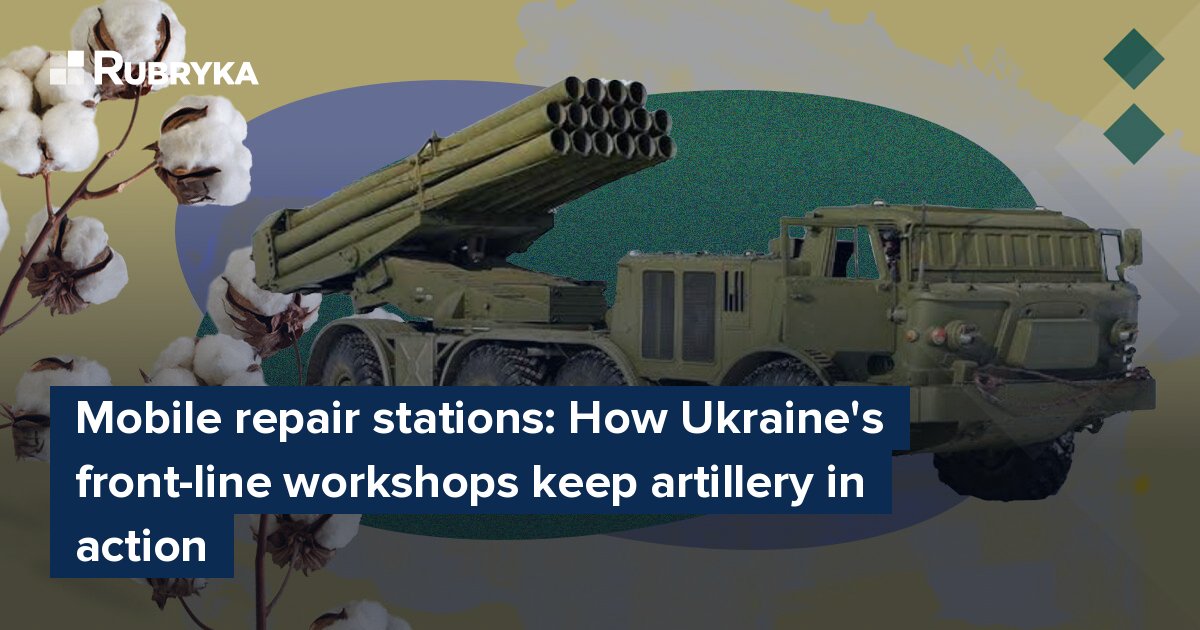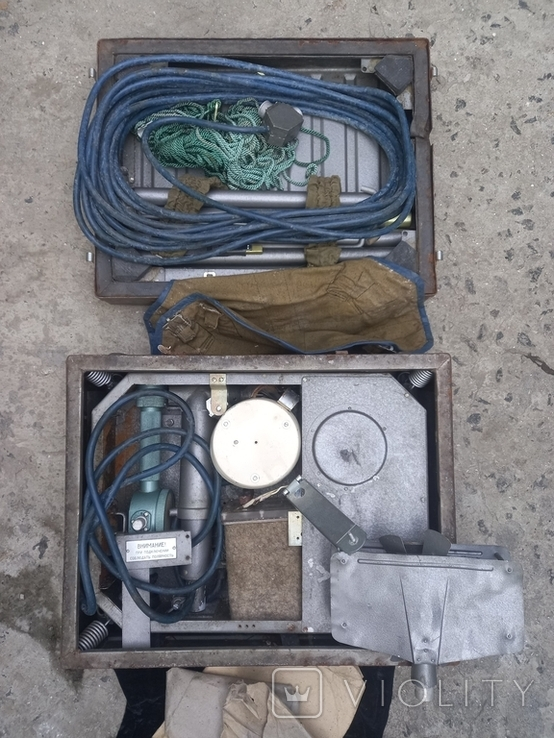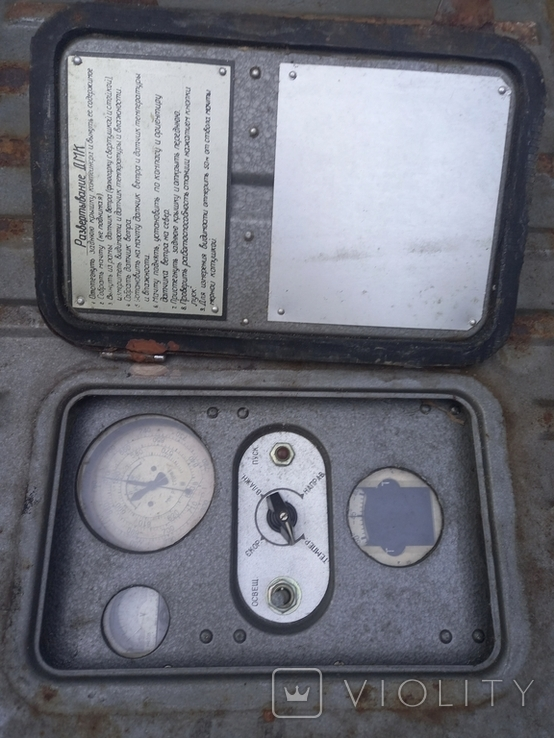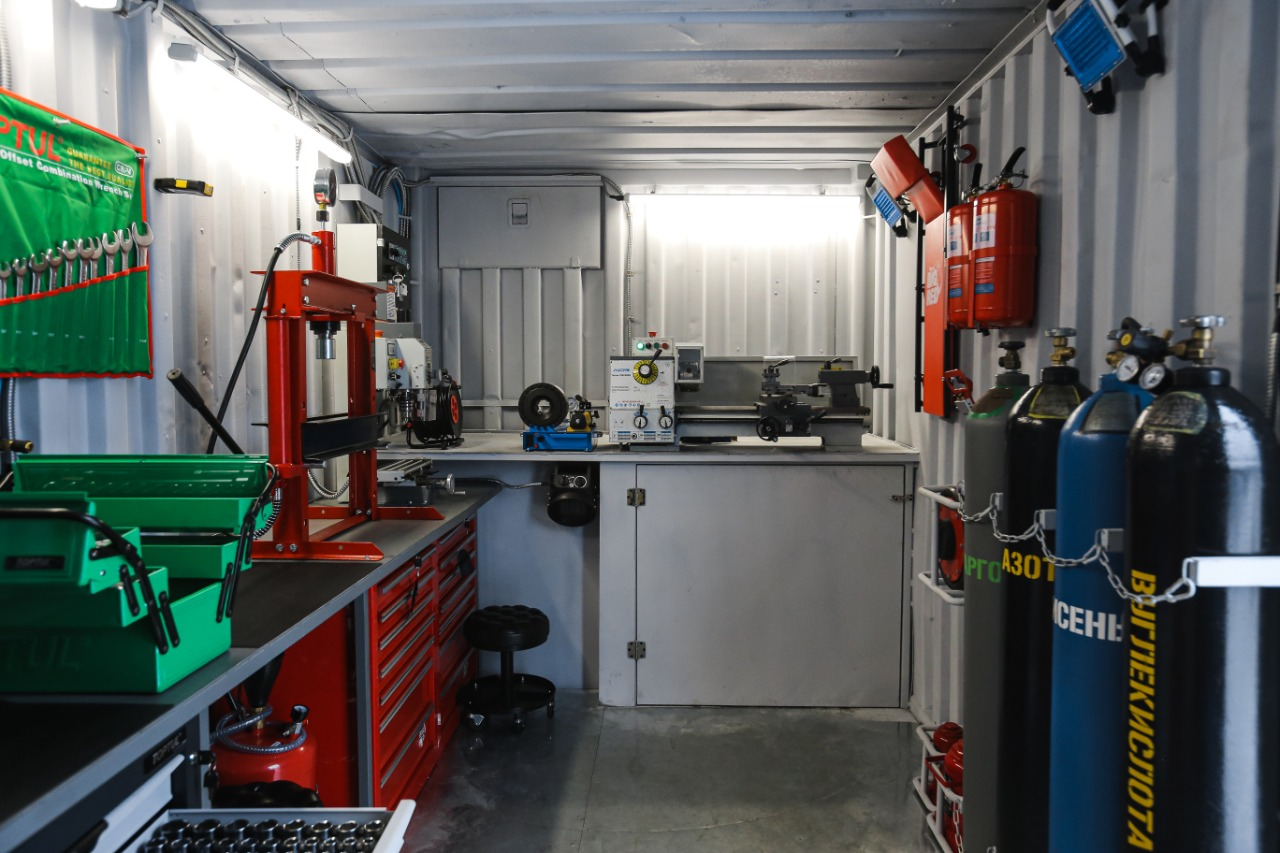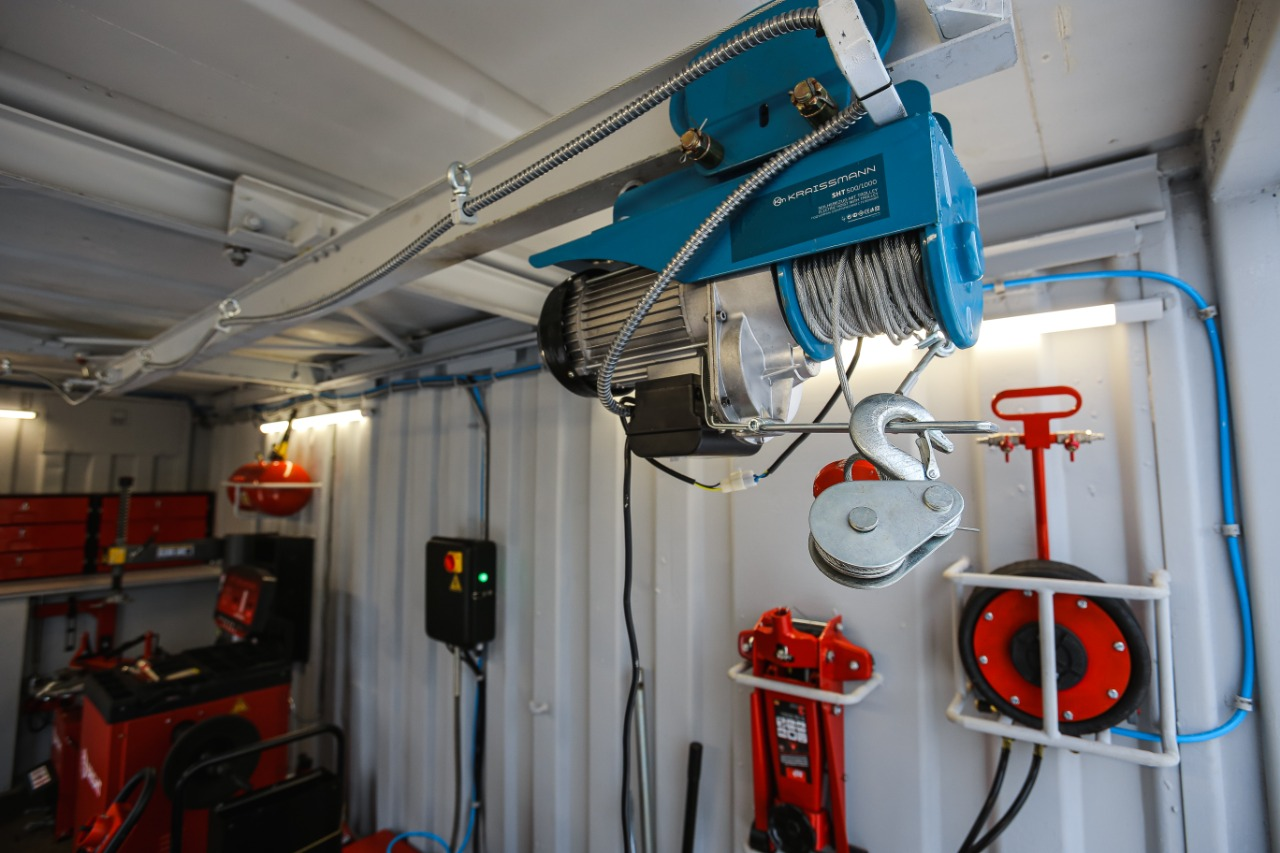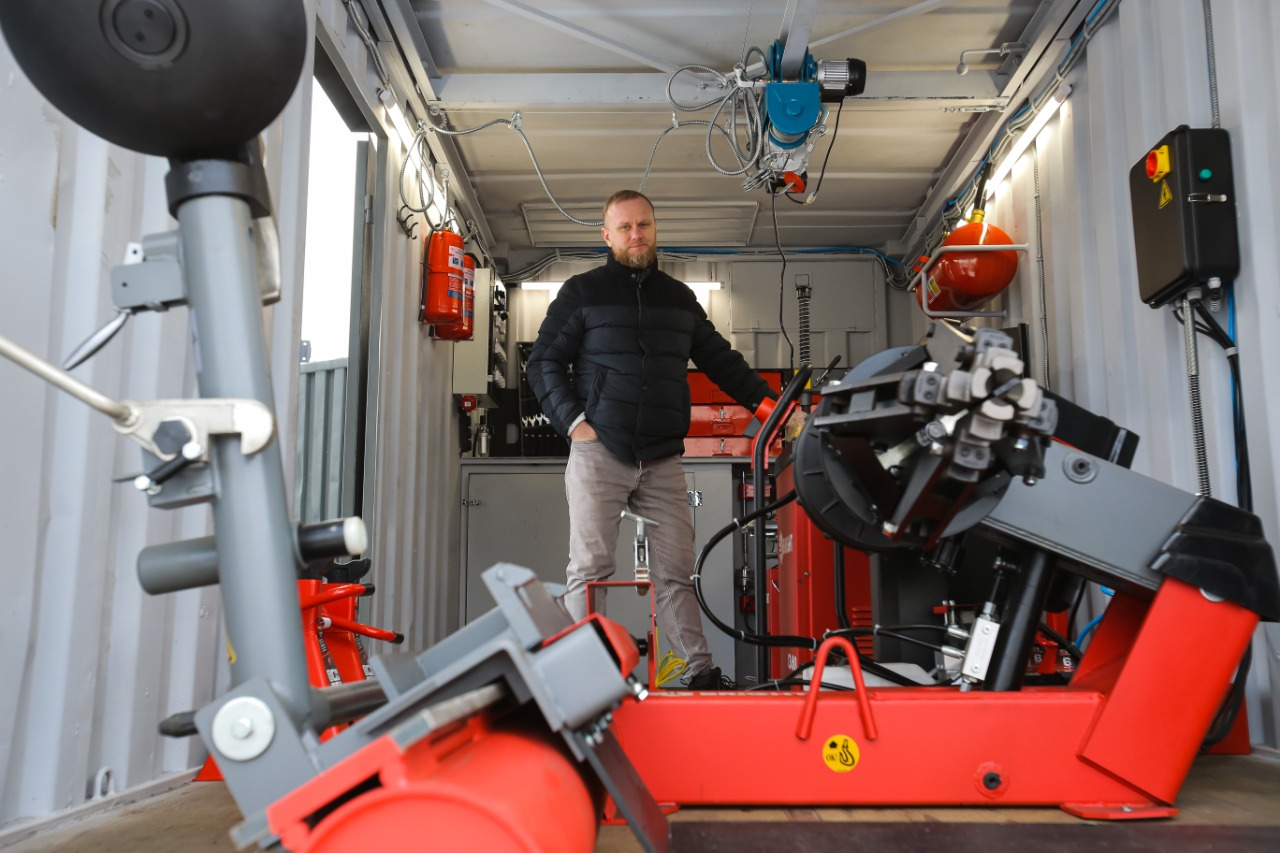
What's the problem?
Often, the issue for the Ukrainian military isn't procuring the necessary equipment but repairing it. In combat, equipment breaks down quickly and constantly needs fixing: sometimes it's just a tire that needs replacing, occasionally minor repairs, and other times old parts have to be swapped out for new ones that aren't always easy to find. Quickly repairing equipment on the front lines is a real challenge, as the repair queue keeps growing, but resources remain limited.
Back in 2014, when the war with Russia was just beginning, the Ukrainian army faced a severe problem — almost all the Soviet-produced equipment that had been sitting in storage for years was unusable. Pavlo Narozhnyi, co-founder of the Reactive Post charity organization, recalls a story of the 27th Artillery Brigade that tried to travel from the northern city of Sumy to the town of Myrhorod in the neighboring Poltava region. They needed to make a trip of 134 kilometers or a 3-hour drive on a Soviet MLRS (Multiple Launch Rocket System) called "Uragan" to protect a strategic airfield.
"It took them two days to make the trip. They were going very slowly, and everything kept breaking down," says Pavlo. "We even have a video of them, poor guys, leaving the park, and the equipment wouldn't start."
The activist explains that the Uragan MRLS has two engines, each powering the left and right wheels. When one engine dies, it looks like one set of wheels is turning while the others are dragged along the ground. "Half the vehicles were like this, running on just one engine. So, the first task was to get this equipment up and running," Pavlo says.
From 2022 to 2024, the situation has improved, thanks to increased donations that can cover the army's needs. However, the equipment itself has changed. Before, volunteers and the military had a repair routine for the familiar Soviet gear. Still, with the start of the full-scale war, they needed to deal with new Western artillery, which began to replace the old equipment.
"Soldiers would come to us saying, 'Our Uragan is broken. What do we need to fix it?' We would figure out which engine it had and where to find it," says Reactive Post co-founder Pavlo Narozhnyi. "Now, we're doing the same thing but for Western equipment. You won't believe the variety of equipment we have to repair. It only looks like all the action on the front is about driving HIMARS and shooting."
Military equipment repairs also need to be done quickly and effectively, as the success of the Ukrainian army and soldiers' lives depend directly on this work.
What's the solution?
Since 2014, the Reactive Post has been helping Ukrainian artillery by purchasing necessary spare parts and assisting with equipment repairs. In 2023, they began equipping the army with modern mobile maintenance stations. These stations are vehicles with everything needed for quick and effective repairs in challenging conditions, such as combat zones. How do the workshops help the military?
How does it work?
Bringing equipment out of the dust
The Revolution of Dignity, the mass civil protests of 2013-2014 against pro-Russian President Viktor Yanukovych and his decisions to distance Ukraine from the EU and the Western world, was a turning point for many volunteer and civic initiatives. This is where the story of the Reactive Post charity organization began.
In 2014, Pavlo Narozhnyi joined the activists at the Maidan Nezalezhnosti, the Ukrainian capital's central square and the epicenter of the rallies. Back then, he was building barricades to protect protesters from the police, delivering food, and taking care of medical needs, never imagining that the title of "volunteer" would stick with him for at least the next ten years.
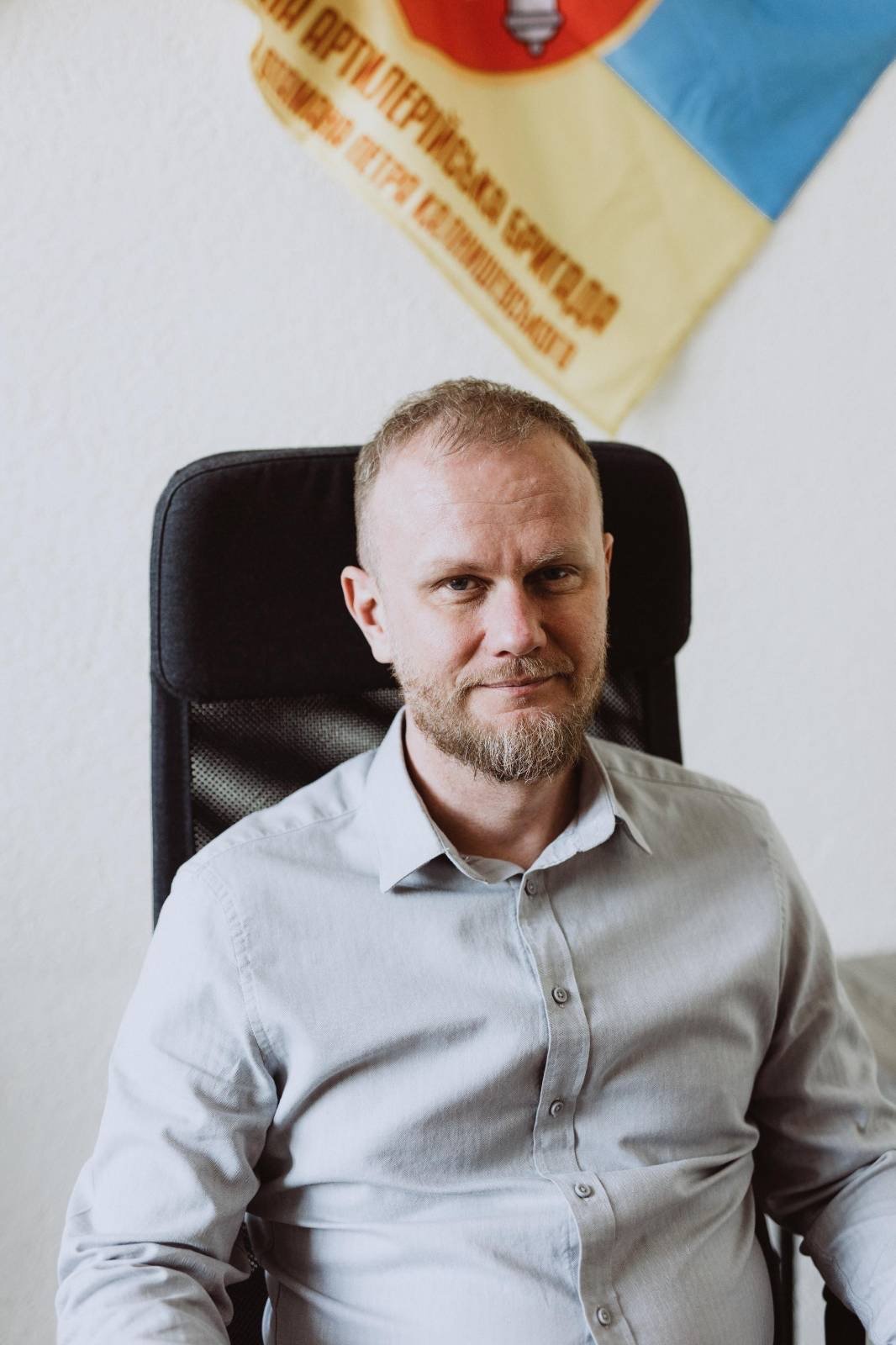
Pavlo Narozhnyi. Photo: Reactive Post
Even less did Pavlo, who had no understanding of how the army worked, expect an unusual request from his friend in April of 2014 when Ukraine began the Anti-Terrorist Operation in the eastern Donetsk and Luhansk regions to fight against the invasion of Russia and its proxies.
"You're a volunteer; we need your help," his friend said, introducing Pavlo to artillerymen from Sumy who were trying to restore old equipment. At that time, the 27th Reactive Artillery Brigade was created in Sumy at the base of the disbanded Sumy Higher Artillery Command School, which later became the Military Institute of Missile Forces and Artillery (also closed).
So, a man with no military education began to learn on the fly about the army's needs, the types of equipment available, and how to repair them. He spent a lot of time talking to officers.
"For the first month, all we did was bringing this equipment 'out of the dust,'" Pavlo says.

Uragan Multiple Launch Rocket System. It consists of two parts: the combat (rocket) and the transport (chassis). Photo: ArmyInform
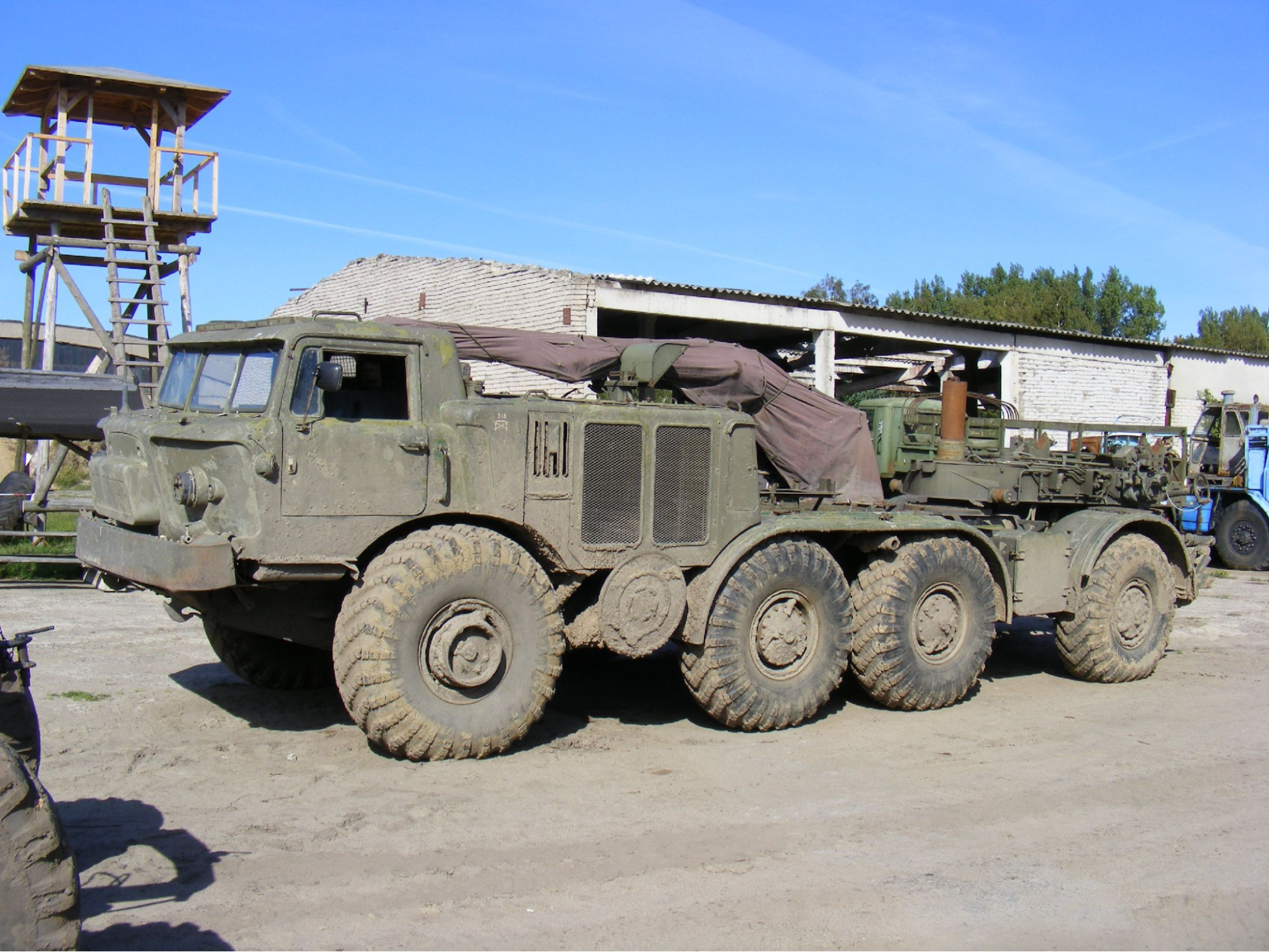
ZIL-135. Soviet trucks were used as the transport part of the rocket launcher. Photo from the internet
The state of the Ukrainian armed forces back then left much to be desired. Years of being disbanded and looted meant the army had to get back on its feet quickly and stand up to a much stronger enemy.
In early 2014, the Ukrainian army had only three types of multiple-launching rocket systems: Grad, Uragan, and Smerch. Ukraine had the most ammunition available for Uragan, so it was used in almost all military operations. Repairing it became a top priority.
The rocket system was developed during the Soviet era and used the chassis of the military truck ZIL-135LM as its base.
"We had a very similar truck, the ZIL-131, which was the civilian version of these military trucks. You could buy spare parts for it in any store," Pavlo recalls.
This is what volunteers did next: they bought spare parts, both regular and specialized military ones, and set up repair and production of these components. Pavlo says that from 2014 to 2015, some volunteers even brought spare parts from Moscow, buying them wherever they could. Some brave individuals smuggled them from Russia into Ukraine.
Activists also searched for spare parts and other equipment. For instance, weather stations became a scarce commodity. These devices helped artillery units make accurate shots by measuring wind direction, speed, humidity, atmospheric pressure, and temperature. Due to the lack of airborne meteorological kits, they bought civilian weather stations instead.
"Many people imagine volunteer work as just people driving somewhere and delivering things, but that's not the most important part," Pavlo believes. He and his friend Dmytro Chukanov named their initiative Reactive Post, mainly because all deliveries are made through postal services: Ukrposhta, Nova Poshta, Meest, and others. Pavlo shares that he has been to the front line only three times in ten years; more often, commanders and officers come to him.
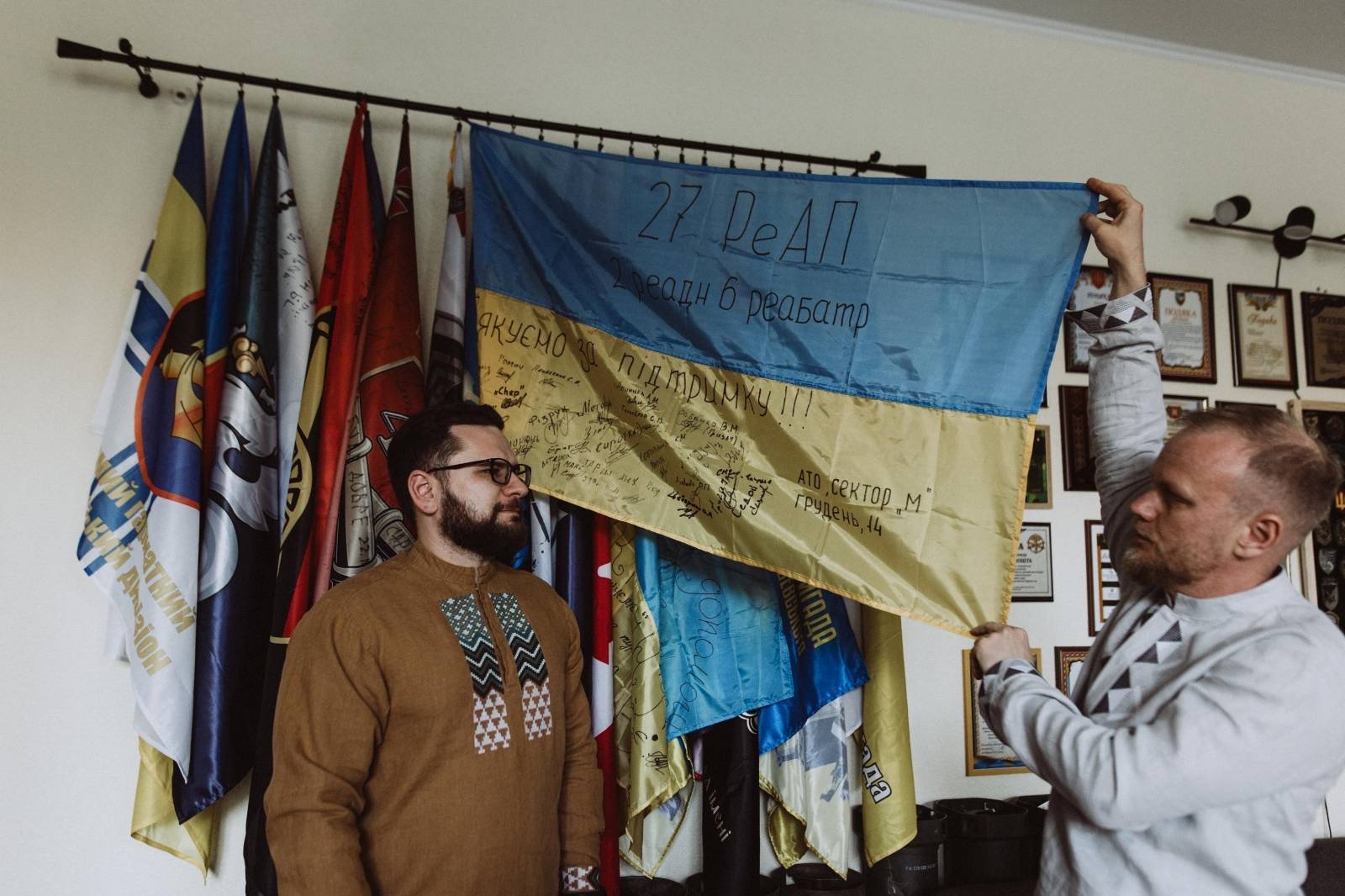
C0-founders Pavlo Narozhnyi and Dmytro Chuckanov. Photo: Reactive Post
Over the years, Pavlo has realized that volunteering is primarily about fundraising. You constantly have to think about where to get money, how to organize operations, and how to meet all the needs with the available funds. The second crucial part is finding the needed items, which becomes incredibly challenging when locating rare spare parts.
Mobile maintenance stations on the front line
"When the Ukrainian army advanced in 2014, we moved forward with two Uragan multiple rocket launchers: two vehicles followed our infantry and cleared the way," says the charity's co-founder. "Yes, the situation was different then — there weren't such strong fortifications or massive use of armored vehicles, but artillery's power was still very strong."
Pavlo adds that a single gun can fire 100-150 rounds in one night during active combat, and every other artilleryman records hundreds of enemy casualties in just one week.
In his piece for The Economist, Ukraine's former commander-in-chief Valerii Zaluzhnyi wrote: "In this war, as in most past wars, artillery, rocket and missile fire make up 60-80% of all the military tasks."
This statement is echoed by Serhiі Baranov, who temporarily served as the Acting Chief of the Combat Strike Systems Directorate of Ukraine's General Staff in 2023: "According to statistics, up to 80% of enemy losses in combat equipment and personnel are on our account. Ukraine's Western partners even claim that we have created what they call a kill net or the 'Kill Net of Ukraine's Armed Forces.' This means we have learned to use comprehensive fire from all rocket and artillery means to ensure the maximum success of infantry advances."
Maintaining artillery equipment in good condition helps the Ukrainian army fight the enemy more effectively. Reactive Post launched mobile technical service stations to speed up the repair process.
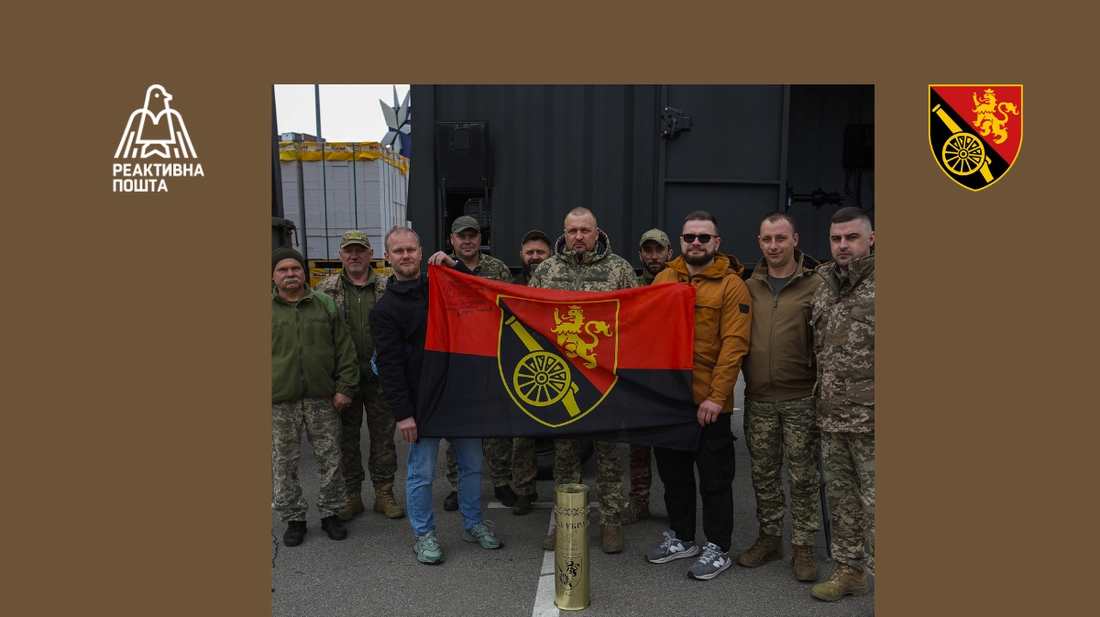
Construction of repair stations and tire service for the 45th Separate Artillery Brigade. Photo: Reactive Post
Mobile workshops are a familiar concept for the army. They were first created during Soviet times and were based on the platform of the ZIL truck.
"It's a cabin with two or three machines, generators, and so on. And everything is in terrible condition," Pavlo comments.
The volunteers first considered upgrading these Soviet-era workshops by supplying modern machinery and equipment for field repairs. Later, they decided to build their large service stations.
Military personnel don't always have the time or opportunity to travel to civilian service stations to fix their equipment, and speed is critical on the front line.
"In the past, if someone from your brigade had a flat tire but needed to get to the combat zone, a soldier would change the tire with a crowbar. Whether it was done correctly or incorrectly didn't matter to anyone. And that's the simplest case," says Pavlo.
The co-founder explained that the situation was much more challenging with bigger equipment. For example, the Ukrainian army uses the Oshkosh M-ATV tractor, one of the most common vehicles designed to tow trailers or platforms. "If I'm not mistaken, it has 32 bolts and nuts on each wheel. Replacing the tires on one Oshkosh required at least a day's work by four people using crowbars to remove and replace the tires," says Pavlo.
In such instances, the mobile service stations are game-changers because they are equipped with a professional tire fitting machine with a robotic arm, making this job easier and faster.
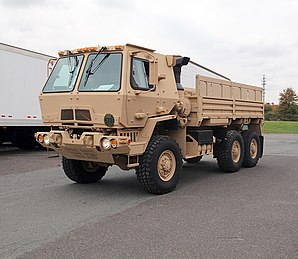
Oshkosh M-ATV. Photo: Oshkosh Defense
The mobile repair workshops are set up inside large shipping containers. Inside are high-pressure hose crimpers, plasma cutters, nitrogen tanks, presses, lathes, welding machines, and more.
Sometimes, equipment requires replacing specific components that can be manufactured on-site, avoiding the need to wait months for suppliers. This is precisely what the mobile workshops are for — soldiers can produce spare parts independently.
Each brigade has its own repair unit. These are soldiers who have received specialized training and are authorized to repair equipment. Volunteers are not allowed to participate in these repairs.
Reactive Post works with brigades by supplying needed items: The brigades send in their requests, and the volunteers coordinate the technical specifications for the mobile maintenance stations. They send the order and a prepayment to the manufacturer, and once the station is built, the volunteers deliver it to the brigade.
The team also provides spare parts that cannot be repaired but are critical for the equipment's operation. Pavlo explains, "Artillery guns have a panoramic sight. The gunner uses it to aim the gun. This periscope is the first thing to get hit when there's shelling because it sticks out. Unfortunately, it's a consumable item. You can fix a gun even if a shell lands nearby, but if the optics are damaged, the gun is out of commission. You can't fire without a sight. We don't repair these sights; we find and deliver them. They're used, but we source them from different suppliers."
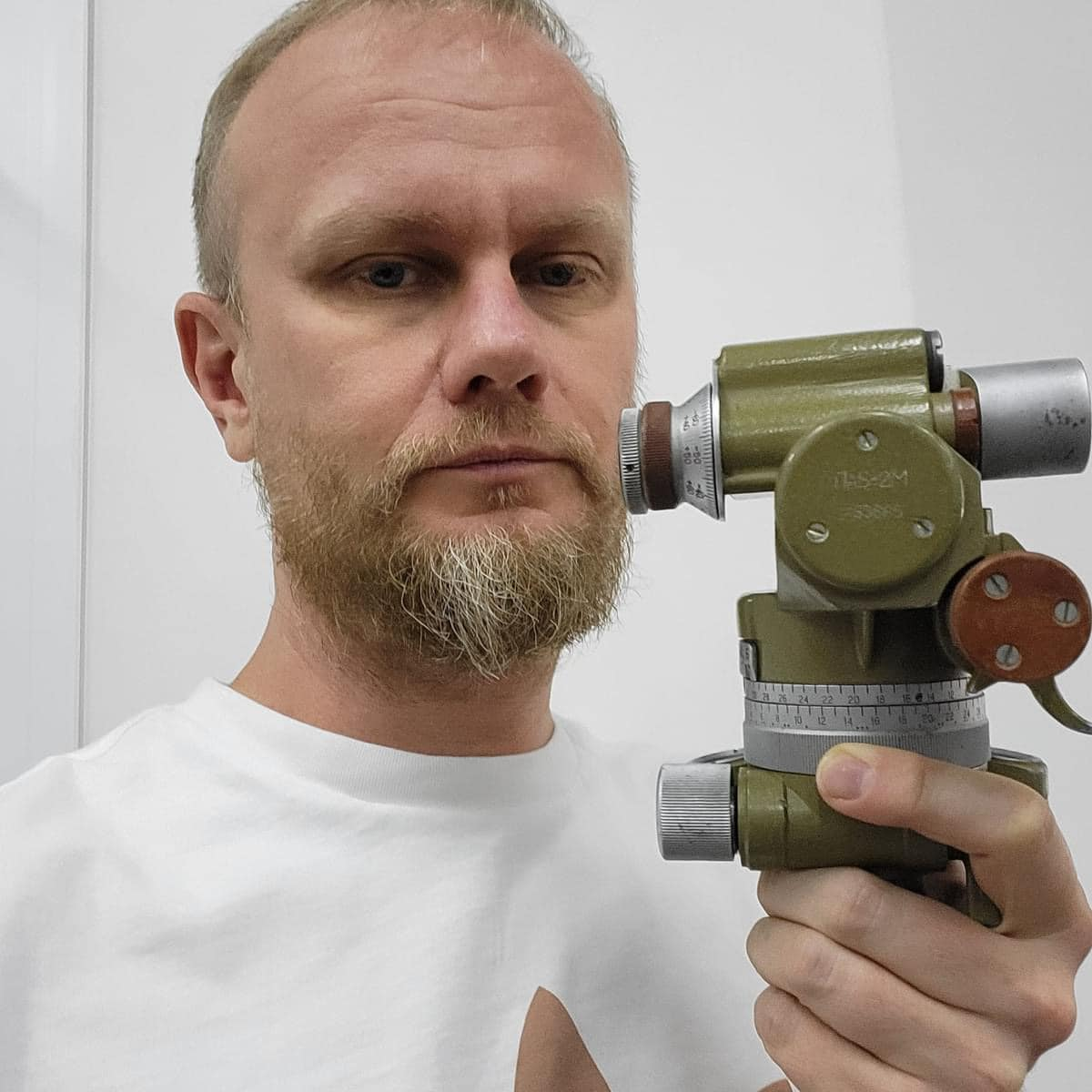
Pavlo is holding a theodolite, a precision compass needed for orienting guns. Photo from Pavlo's archive
Sometimes, spare parts can be "borrowed" from civilian machinery. For example, the Oshkosh truck, which serves as the base for the HIMARS launcher, has a Center Pillar 6 engine and an Allison transmission. The same engines and transmissions are found in tractors used by Ukrainian farmers.
"Basically, we could dismantle a tractor and turn it into a HIMARS," Pavlo says.

Assisting artillery units. Photo: Reactive Post
Pavlo mentions that the most expensive station they built, for the PzH 2000 artillery system, cost $110,000. The duration and cost of building a workshop depend on available funds and the brigade's existing resources. If a brigade has the equipment and only needs shipping containers, it takes two to three months to buy a truck abroad, bring it to Ukraine, repair it, convert it to Ukrainian registration, buy the containers, and set them up. The process takes about a month if the brigade already has containers and only needs to purchase equipment.
So far, the organization has built four of these stations. Each one can last for 15 years and is functionally irreplaceable. "You might repair one artillery unit, only for it to roll over in battle, and this is a constant occurrence at the front — a never-ending cycle of breakdowns," says Pavlo. "That's why the maintenance stations never shut down, even at night, and are never locked; there's always someone fixing something. Other units visit these stations like they're churches. They show up, see it, and say, 'Hallelujah! You've got your own tire shop!'"
Despite these successes, volunteers often have to say "no" because they physically can't meet the needs of all the brigades. Building a station requires significant funding, and raising is becoming more challenging. Pavlo adds that they take pride in ensuring that the donations they receive are turned into powerful assets rather than wasted, and he urges people to support Ukrainian artillery.
Russian artillery on the front line
Russia has maintained an advantage in artillery since 2022, but in June 2024, Ukraine's Deputy Minister Ivan Havryliuk stated that while the artillery ratio was once 7:1 in Russia's favor, it has now decreased to 5:1. However, this is no cause for relaxation, as the Ukrainian army needs much more equipment to fight successfully.
Pavlo Narozhnyi says, "Our equipment differs from theirs. Many systems have performed well: the Ukrainian Bohdana, the French Caesar, and the Swedish Archer. The Russians have released their self-propelled artillery system, the Malva, which has a range of 24 km. By modern standards, that's very, very short. They are falling behind in terms of progress."
The Reactive Post co-founder adds that Russia currently has more artillery because it is being pulled from storage, but overall, these are outdated systems. Ukraine, meanwhile, is building its own artillery. At one of his press conferences, Ukrainian President Volodymyr Zelensky commented that today, Ukraine produces the most artillery systems in Europe — about ten Bohdana units per month.
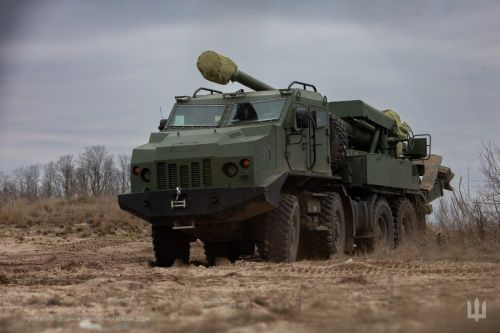
Bohdana self-propelled artillery system. Photo: Ground Forces Command
Imported equipment from Ukraine's partners also plays a crucial role. "Yes, the enemy currently has an advantage in terms of shells and the number of systems, but we're on the rise: factories are being built in the United States and Europe, and Rheinmetall has announced plans to build a shell manufacturing plant in Ukraine. I believe our capabilities are increasing," Pavlo says.
We created this article as part of the Recovery Window Network. For more information on the recovery of war-affected regions in Ukraine, visit recovery.win


